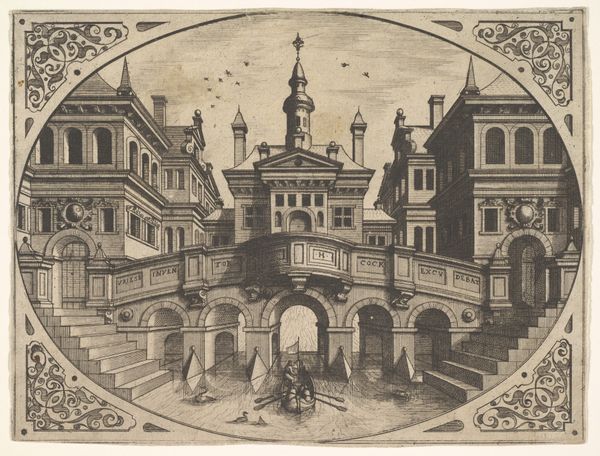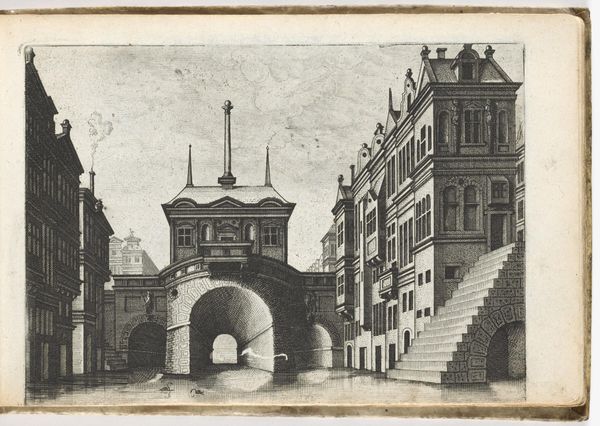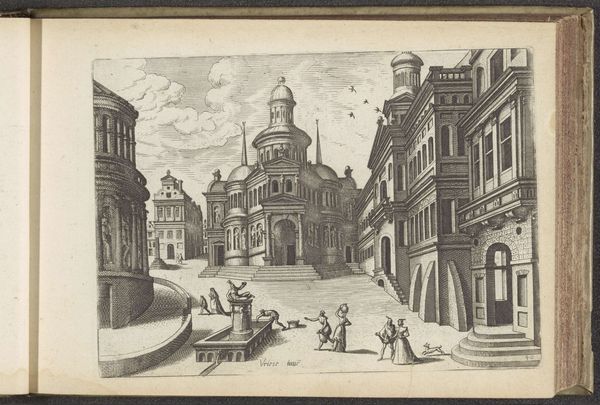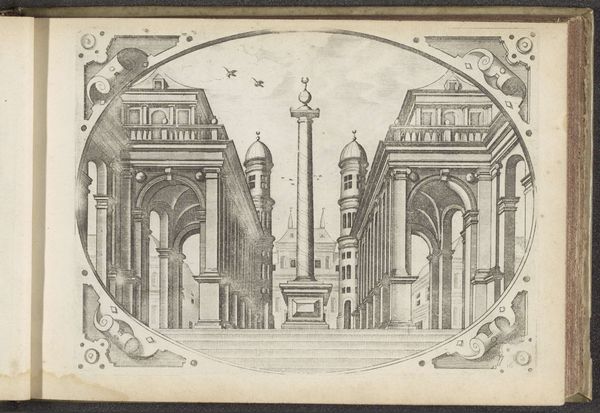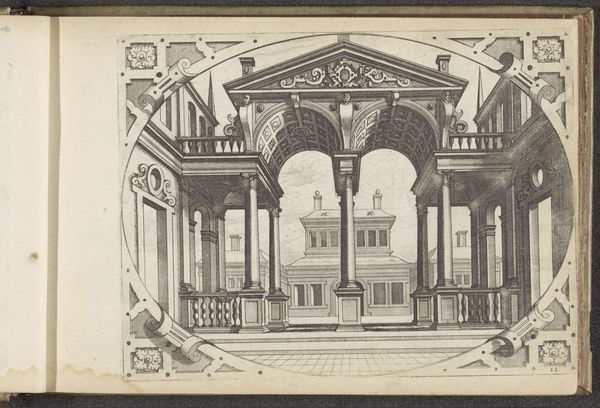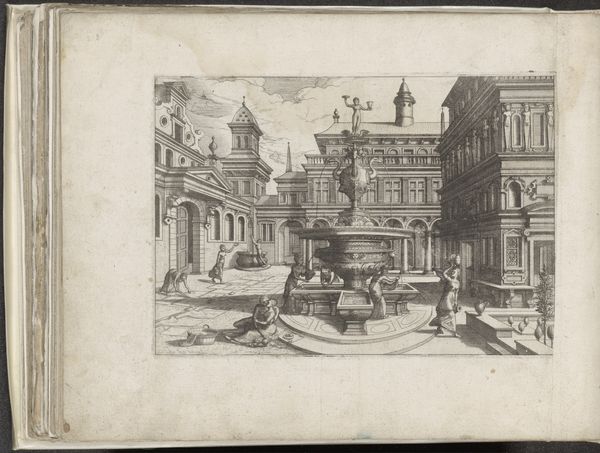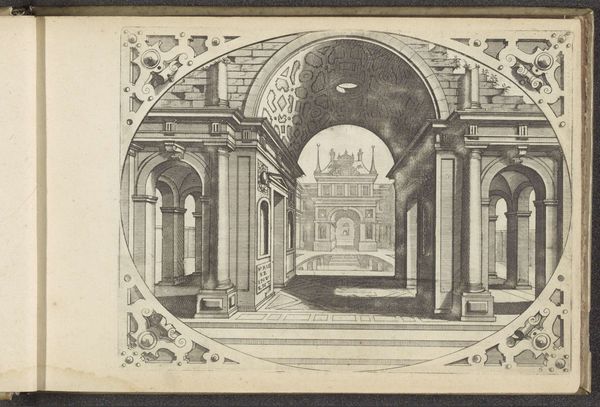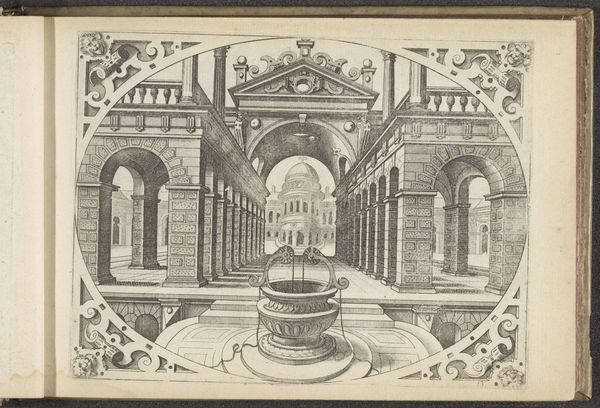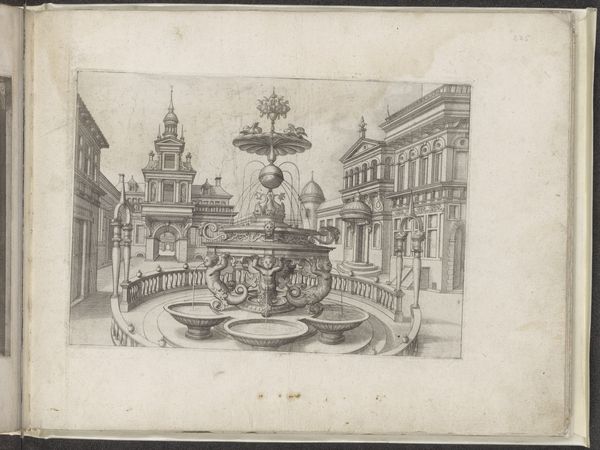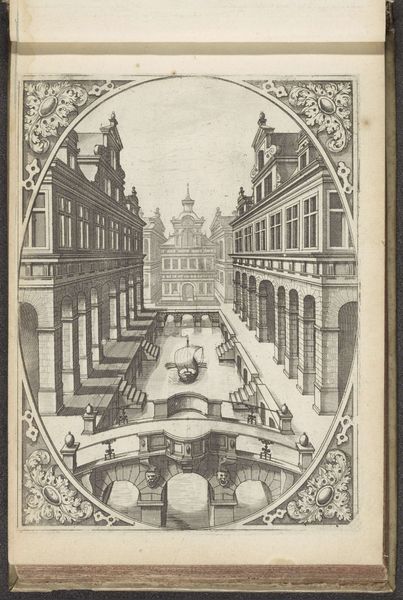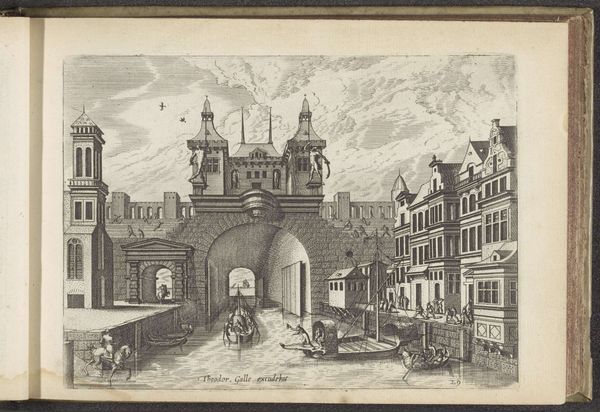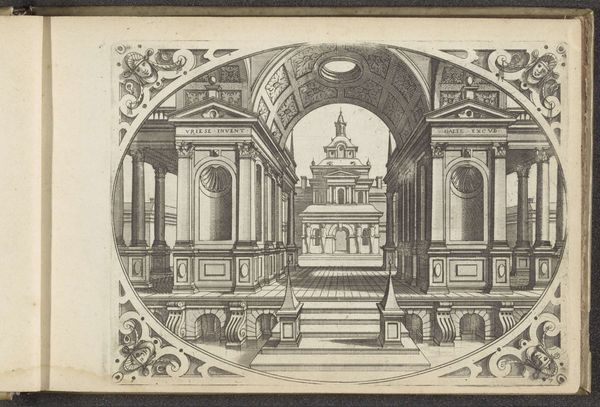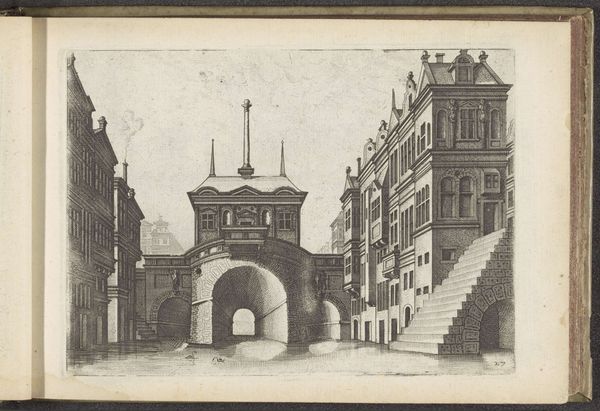
Dimensions: height 162 mm, width 215 mm
Copyright: Rijks Museum: Open Domain
Editor: This is "View of a Canal with Bridge," made sometime between 1560 and 1601, a pen-ink sketch and engraving on paper, created by Johannes or Lucas van Doetechum. It’s quite detailed, and almost feels like a stage set, but what jumps out is the sharp, ruled lines – it's more technical drawing than expressive landscape, at least to my eye. How would you approach this print? Curator: I see a careful documentation of materials, both within the cityscape itself, rendered in such detail, but also explicitly as printmaking. The very labour, the *means* of production are visible, almost celebrated. We’re seeing not just *what* is depicted but *how*. Look at the precise articulation of lines creating form, how those lines become a valuable commodity in the service of both recording place, and circulating designs for those places. Editor: A commodity, interesting. The architecture *does* look very precise and somewhat generic – as if it's a catalogue, almost. Curator: Exactly. Think about the rise of printmaking during this period, and the way it fueled architectural ambition. Engravings like this circulated ideas, patterns, and building styles, connecting patrons, architects, and artisans. The drawing makes visible the exchange of both visual, artistic *and* economic resources and value. Editor: So the image itself played an active role in shaping architectural practices across Europe. Is the inclusion of the ornamental border relevant? Curator: Absolutely. This ornate border makes me think about value and the attempt to distinguish a ‘high art’ from more functional image-making or ‘crafts,’ when it's so dependent on industrializing print processes to realize value at scale. It invites us to consider the artist’s role within production—are they simply skilled labourers, or something more? Editor: That really shifts my perspective. I was initially focused on the subject itself but thinking about the materiality, and the process of creating it, changes the focus to its cultural impact and exchange. Curator: Precisely! By focusing on these aspects we start to look at not just the beautiful *thing,* but the entire system of labour, value, and exchange that makes the image, and the city, possible. Editor: I'll never look at old prints the same way again. Thank you for broadening my view.
Comments
No comments
Be the first to comment and join the conversation on the ultimate creative platform.
